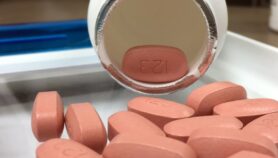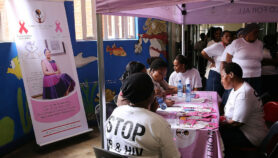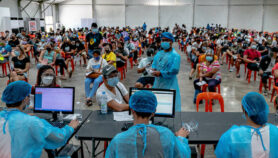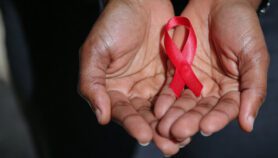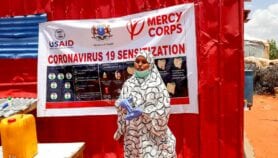By: Esther Nakkazi
Send to a friend
The details you provide on this page will not be used to send unsolicited email, and will not be sold to a 3rd party. See privacy policy.
[KAMPALA] The transmission of HIV in Sub-Saharan Africa could be slashed if efforts are made to combat the spread of the waterborne disease schistosomiasis by providing clean water, sanitation and health education, a study reports.
Genital schistosomiasis, which causes vaginal ulcers, has long been known as a risk factor for HIV infection, as well as infertility and miscarriage, among women in Africa. It is caused by a flatworm transmitted through dirty water.
SPEED READ
- Schistosomiasis causes vaginal ulcers in women, making them vulnerable to HIV
- Clean water and sanitation are a cost-effective way to reduce schistosomiasis and therefore HIV
- The international community should treat schistosomiasis control with a new urgency
To test whether schistosomiasis infections could be reduced in a cost-effective manner, researchers from Norway, South Africa and the United States plugged epidemiological and clinical data from Zimbabwe into a mathematical model.
They found that community-based interventions — providing universal clean water, sanitation and education, as well as the drug praziquantel to treat schistosomiasis in children — would be cost-effective way of cutting the two infections at between US$725 and US$1,000 per individual over a period of 20 years.
This is similar to the estimates of what it would cost to provide clean water and sanitation in developing countries (between US$200 and US$1,020).
And because these interventions can reduce schistosomiasis and HIV transmission, as well as diarrhoeal disease and bacterial infections caused by infected water, they should be economically attractive to policymakers, the researchers write in Proceedings of the National Academy of Sciences (PNAS) last week (15 April).
"By reducing schistosomiasis transmission in Africa, [provision of] water, sanitation and health would reduce the prevalence of women at an increased risk of HIV infection due to genital schistosomiasis," says Martial L. Ndeffo Mbah, the study’s lead researcher, and a public health specialist based at Yale University, United States.
"This will in turn reduce HIV transmission in Sub-Saharan Africa, and especially in areas where schistosomiasis and HIV are highly prevalent.
Schistosomiasis, or bilharzia, affects more than 240 million people worldwide, with 90 per cent of cases in Africa, according to the WHO.
Genital schistosomiasis is usually acquired by children and women. It lives in the bladder and genital tract, causing lesions around the vagina and cervix and resulting in a condition known clinically as female genital schistosomiasis.
Edridah Tukahebwa, an entomologist and chief schistosomiasis specialist at Uganda’s Ministry of Health, says the study is an important development for Sub-Saharan Africa, for the fight against HIV and for women.
Mbah says that the study should provide new urgency for international donors and public health authorities on the importance of schistosomiasis control in Sub-Saharan Africa, particularly as this will also likely reduce the burden on health systems on the continent.
The WHO recommends preventive chemotherapy as a global strategy for the control of schistosomiasis. It also warns that, without adequate attention and research, the disease may hamper Africa’s ability to make real progress towards the Millennium Development Goals by 2015.
Link to abstract in PNAS
References
PNAS doi: 10.1073/pnas.1221396110 (2013)







